Adelina Modesti has published her second monograph in English on the artist, Elisabetta Sirani (1638-1665), a virtuosa of early modern Bologna. At the heart of Modesti’s study is the life and work of a painter and printmaker who, raised in her father’s studio, went on to manage the family business, producing hundreds of exceptional works – paintings, drawings and intaglio prints – inspired by Christian scriptures and ancient myth. In her own lifetime Elisabetta Sirani was favourably compared with the most revered Italian painters of the period as “the best brush”. All this she achieved before her early death at twenty-seven years.
It has been fifty years since art historians Linda Nochlin and Germaine Greer launched an investigation of women’s agency in art history, and yet the complete catalogue of Sirani’s works was published as recently as 2014 - once again by Adelina Modesti. Modesti’s curiosity and her three decades of dedicated research have brought Sirani’s achievements to a contemporary audience, making her the leading expert on this luminary of Bologna’s school of painting.
In a window onto Bologna of the Seicento, Modesti’s most recent study brings to life a cultural centre controlled by the Popes of Rome, yet renowned for its fostering of female artists, musicians, writers, and scholars. In the interview that follows, Adelina Modesti reflects on the increased opportunities available to women artists of the period and the constraints imposed by a moral and aesthetic agenda shaped by the Tridentine decrees. But Modesti goes further, outlining how urban elites, religious orders, and a newfound recognition of women in the arts all played crucial roles in negotiating and shaping that culture - resulting in extraordinary outcomes.
In this conversation, Modesti identifies Sirani’s greatest achievement in the striking originality of the heroines of her paintings—biblical and classical —among them Judith, Timoclea, Cleopatra, Portia, and Delilah. In a society where the Counter-Reformist Roman church controlled patronage and employed the arts for religious and political ends, Modesti finds that Sirani’s female protagonists were even so much admired by men and women, in testament to an early modern sensibility.
Elisabeth Stoney spoke with the author Adelina Modesti in Melbourne about Elisabetta Sirani and why the art world needs to know more of this artist and her achievements.
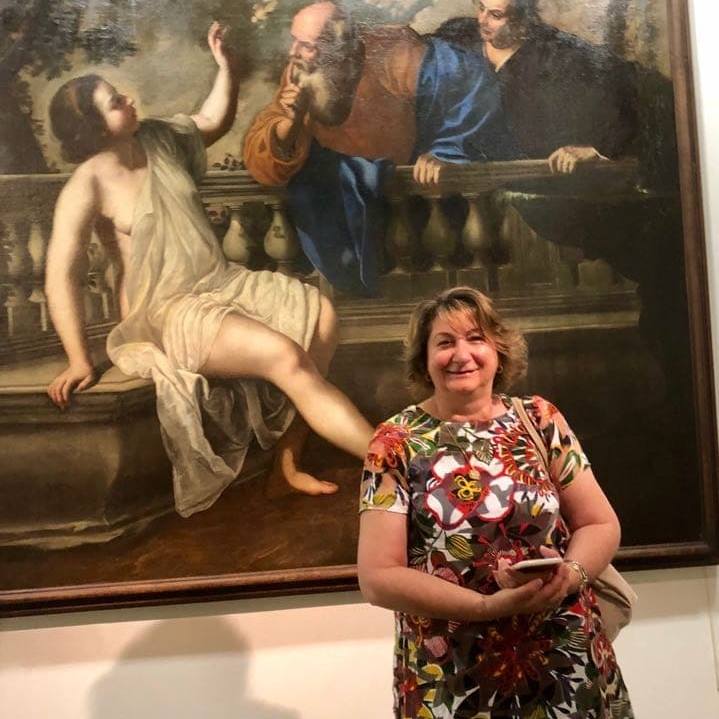
ES. Despite being celebrated as a “genius” of the Baroque in her own lifetime, Elisabetta Sirani had to wait until the twenty-first century for a comprehensive biography and a complete catalogue of her works. You are the author of both the recent catalogue raisonné and Sirani’s biography, the first in English language. Why has it taken so long? Did art history lose sight of Elisabetta Sirani?
AM. I don’t think she was really lost, at least not up until the twentieth century. She was quite collected in the eighteenth and in the nineteenth century when she was sort of transformed into a romantic heroine due to her supposed death by poisoning. There were plays written about her. So, effectively, she was always in the popular imagination. In the early twentieth century when Guido Reni and the Bolognese school go out of favour - even earlier, in the nineteenth with the French critics - Sirani is dismissed as an emulator of Guido Reni, as a pale imitator of his style, which she wasn’t really.
How did that happen?
During her lifetime she had been considered to be “il secondo Guido”, the second Guido. She had learnt her craft from her father, Giovanni Andrea Sirani, who in fact was the imitator of Guido Reni, as Reni’s most trusted assistant. He taught Elisabetta in Guido Reni’s “second manner”, that silvery light and range of classical effects. So while her early work does tend to follow Guido Reni, she becomes very independent and develops her own style. Carlo Cesare Malvasia, her friend and biographer, discusses her wanting to fare maniera da sè, to paint in her own style, she not wanting to appear second to someone else. So while the Bolognese School does fall out of favour in the early twentieth century, Sirani is not totally forgotten. There was, for example, in 1911, a major exhibition at Florence’s Palazzo Vecchio of Italian portraiture in celebration of the fiftieth anniversary of the Unification of Italy where one of her wonderful portraits, that of Anna Maria Ranuzzi, was included. Then Sirani largely disappears from the historical record until 1959 when a major exhibition in Bologna of Emilian painting of the seventeenth century exhibited her two Sibilla paintings. There’s a critical consideration of her works in the catalogue entries by Andrea Emiliani who becomes the superintendent for culture in Bologna and Emilia Romagna. So you have these moments of documented importance of her work.
Her fame it seems did not translate readily into the English-speaking world. Your biography is the first comprehensive English-language study of Sirani in over three hundred years. For the most part, English-language art history didn’t include women artists of the period before the feminist reassessments of the 1970s.
Well, Walter Sparrow, in early twentieth century includes her. His text is a bit problematic because it’s concerned with women artists as painters of delicate things. Laura Ragg, in the same period, writes on four women artists in her Women Artists of Bologna, giving a whole chapter to Sirani. Again, it’s romanticised because it’s coming from a tradition that holds women to a kind of ideal of womanhood. But she does go to Bologna to the archives, she discusses documents, but she doesn’t document the documents, which is difficult. Then it’s oblivion until the seventies with the Linda Nochlin & Ann Harris show Women Artists: 1550–1950 in Los Angeles. And at the same time, Germaine Greer’s The Obstacle Race does quite a lot, even if it was quickly erased from art history in the sense of its historiography - it was never considered a text of the register of the Harris & Nochlin exhibition catalogue.
It was a new way of writing art history.
It was a new way of writing art history - and Germaine Greer had actually done the legwork. She’d gone to Bologna, gone to the archives, to the Biblioteca Comunale dell’Archiginnasio, to the manuscript room where there’s a huge quantity of documentation, and has made a great contribution. But she’s not acknowledged as much as other art historians.
Because she is a public figure and politically self-styled.
Perhaps, yet other art historians were, like Linda Nochlin, making political points about the institutional obstacles and societal constraints that women encounter. In the seventies the first article was written on Sirani in Italian by Fiorella Frisoni who had written her doctorate on Sirani’s father, Giovanni Andrea Sirani. She started looking at Elisabetta with a critical overview of her work with a really important article "La vera Sirani”. And from then on, we have the feminist art historians picking Sirani up.
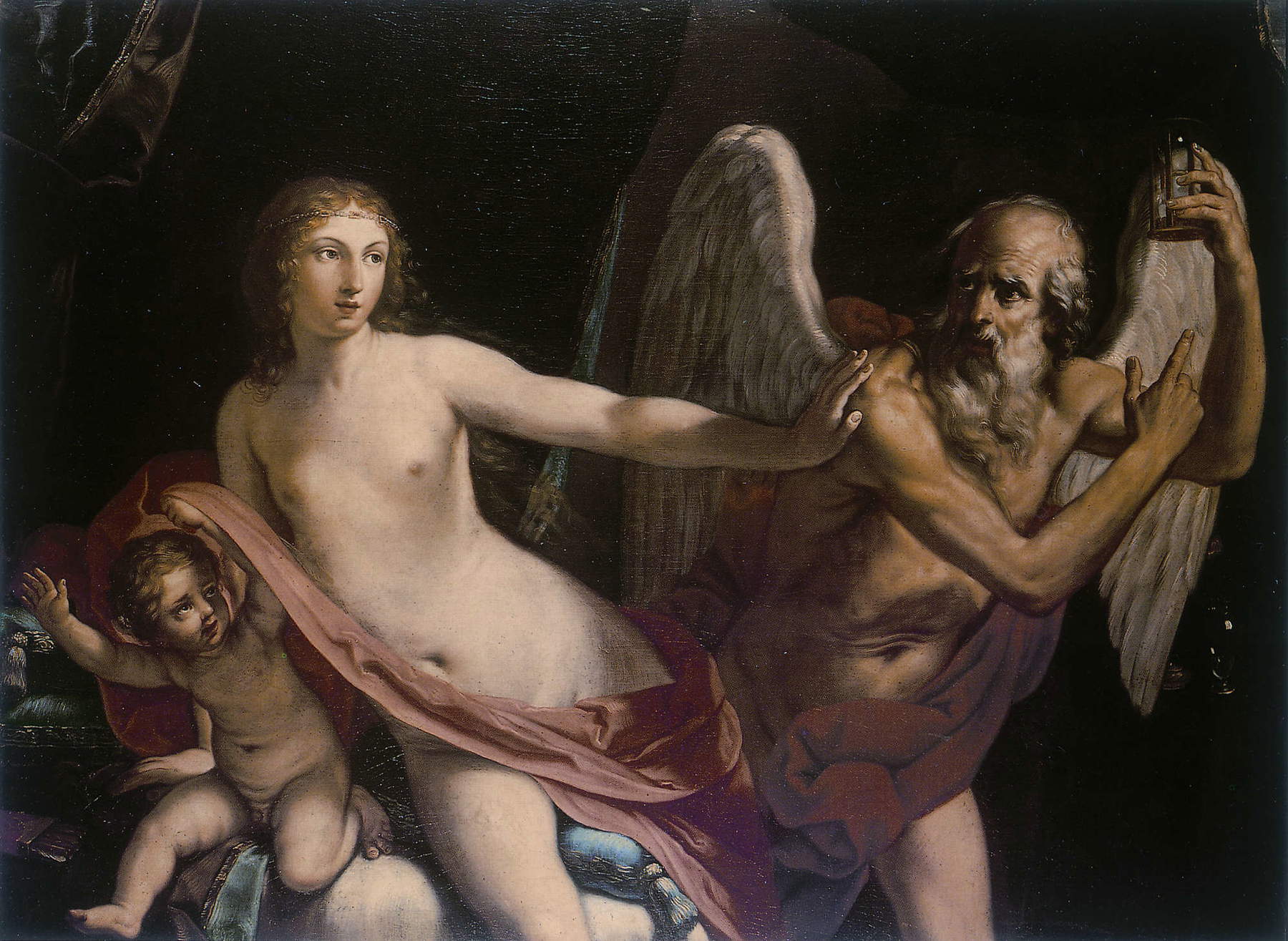
If we contrast the kind of popularity and notoriety of Artemisia Gentileschi with Sirani’s more contained and professional persona, we find two very different profiles, with Sirani attracting nowhere near the level of public attention drawn to Gentileschi. Has this been a factor that has impacted her visibility over time?
The unfortunate thing with Gentileschi is the rape, in terms of the way she’s been talked about historically. The twentieth century focused on her rape and not her artwork. For Sirani however it has been very different: her first biographer Carlo Cesare Malvasia writes about the greatness of her works and describes them, not confining his discussion to her moral virtue, that is, as domesticated, humble and pious in the terms of a woman typical of her time. His is one of the earliest biographies of a woman artist to do that. As to the question of Gentileschi and the notoriety that developed around her – she’s victimised. Sirani too is victimised in that she’s considered to have been poisoned.
But this is mythical?
It’s mythical. But her father did bring an accusation of poisoning against Lucia Tolomelli, the domestic who worked for the family. He was heartbroken and bereft. In addition, his primary source of income had just been taken away. Given her stomach problems, he considered that she might have been poisoned. Certainly poison may have entered her system through the paints or the acids used to produce her etchings. She could have licked her fingers or inhaled the fumes of a poisonous material such as lead white or nitric acid. The autopsies found that there were holes in her stomach suggesting something had eaten away at the lining. It was eventually concluded that she died of natural causes, most probably a peptic ulcer that had ruptured causing a fatal peritonitis infection. It would be a very painful death. The domestic, the accused, was brought to trial twice. At both trials there were testimonies from the apprentices of the Sirani workshop, Sirani’s mother, her aunt, everyone who knew her, that recount their versions of the story and all describe Sirani as gagliarda, being tall, physically present. And that at the end she just dwindled away to nothing.
But you don’t indulge such narratives at all.
I do briefly refer to the trials, but no, I stayed clear of baseless rumours. Various versions emerged that suggested she was probably or possibly poisoned. Ginerva Cantofoli, her pupil and assistant was said to be a jealous rival. Well, she was twenty years older than Sirani and a married noblewoman, so she’s not a rival. It’s a nineteenth century romanticised fiction of what happened. Another version recounted over and over would have it that a rejected suitor had had her poisoned.
You also stayed clear of the more personal and non-professional aspects of her life. You don’t discuss her psychology or her sentimental life.
You don’t know, as an historian. You’re dealing with documents and to enter into someone’s psychology can be very difficult.
And yet Gentileschi’s difficult personal circumstances and the violent and filmic aspects of her aesthetic come to be understood as interdependent in the reception of her work, as you’ve suggested.
But the thing with Gentileschi is that the images are seen as revenge images, and there may be an element of that. But that’s again what was said in the eighties and nineties, what was focused on in psychoanalysing her relationship with Tassi. The tendency of critical attention to focus on the personal and domestic lives of women artists was partly associated with the space that women were allowed in the earlier period, in that they weren’t permitted a public voice. A lot of women artists were relegated to the domestic space and so were painting those surroundings, their families. Even Sofonisba Anguissola, who was a more public figure than many women artists, focused on her family in her early works, then went on to paint the King and Queen of Spain, developing portraiture to a very intimate level.
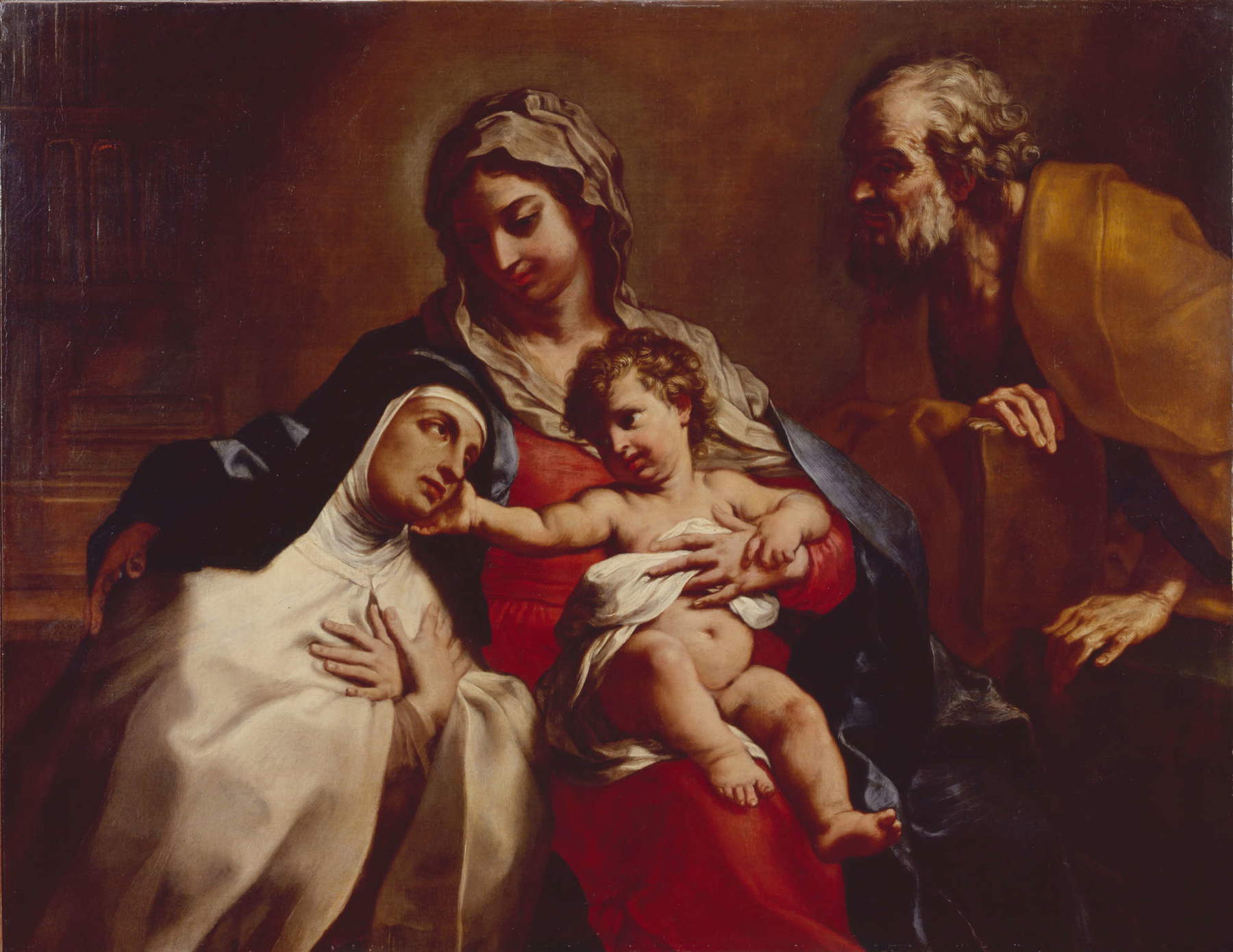
In this biography you explain how Elisabetta Sirani was exceptional among women painters in the number of history paintings that she produced and that she broke the social limitations of the subjects and themes women might address in their artworks.
Yes, definitely. Gentileschi did it with history painting as well. Lavinia Fontana started out with public altarpieces and religious history painting. Towards the end of her life she painted some mythological scenes such as Venus and Mars (1505) - she was probably the first woman to paint the nude. But Sirani very much made history painting, both biblical and classical, the core of her subject matter. She really does break out. Women were considered unable to paint large-scale epic works because they, women, were considered to be inferior to the male genius, incapable of genius. Sirani belies that through her work - and was openly regarded as a genius in her lifetime. There was, again, an institutional barrier in that women artists were not permitted to draw or paint human figures from life, using human models. Instead of live models, they used plaster or wax models of ancient sculptures and drew on other artists’s drawings and paintings to develop their understanding of anatomy and the human form. But Sirani breaks through those constraints and becomes one of the first women artists to specialise in history painting, which seemed to be more lucrative than others. History painting was the most prodigious of the artistic genres, at the top of the hierarchy, because it deals with human endeavour and the major historical moments of man, of mankind. But she turns that on its head and makes of the genre the major historical moments of womankind.
How does she do that?
With the heroine... she’s not the first, because you’ve got Gentileschi, obviously, who is working up until the mid-fifties, the 1654. Sirani and she are contemporaries for a period, Sirani being born in 1638. Already in the 1613 and 1620, Artemisia is producing the Judith and Holofernes images that are very powerful - making Judith, rather than Holofernes, the protagonist of the painting.
You show Sirani able to direct the narrative of a range of stories away from conventional interpretation.
Take Timoclea, an amazing image: she throws the captain of Alessandro Magno, the man who had raped her, into a well. The story is recounted by Plutarch in the “Life of Alexander”: his captain rapes her and demands her money, so she astutely leads him up the garden path explaining that her money and jewellery et cetera, are hidden in the well. As he peers over, she throws him in, to be followed by rocks that will kill him. Notice how the well is like a sarcophagus, with an ancient marble relief recounting Galatea and the Rape of the Sabines. Rather than seeing Timoclea as a victim, Sirani depicts her as an empowered figure, a woman who has strength and courage to act out what she feels is justice. She draws from an etching by Matthaeus Merian the Elder, a northern painter who also depicts the scene of the well. Hers becomes the first oil painting to focus on this moment. There is one later version, by a male artist. It shows the captain stepping in of his own accord with the handmaidens looking on and preparing the rocks. So she doesn’t act on her own. Sirani’s is a very Gentileschi-styled composition and she has also noted the rotating legs of Matthaeus Merian’s captain. He is totally disempowered – there’s the look of horror on his face as he realises what’s happening. The intact amphora below Timoclea is a symbol of her virginity, of her purity and wholeness, her moral integrity. The work would have been temporarily exhibited, accompanied by wonderful poems, before it was sent off to the patron. The poems were sonnets in praise of the work and admiration of Sirani’s capacity to rival nature.
Has Sirani invented a new heroine in some way?
I wouldn’t say she’s invented a new heroine, because as I say, she’s drawing from Gentileschi. But yes, she invents her own heroines - as Gentileschi does. My methodology draws a lot from Mary Garrard’s writing on Gentileschi’s heroines that she published in 1989. With Artemisia Gentileschi: The Image of the Female Hero in Italian Baroque Art, she’s the first to look at these images of women, strong women, where Gentileschi presents them as active, as not passive beings. And that’s what Sirani does.
From where does Sirani derive her heroines? What are her historical sources?
From the Renaissance, from the biblical heroines such as Judith, and otherwise from classical sources. With Boccaccio and his De Claris Mulieribus on famous women, you start to get these images. Pliny the Younger also wrote about heroines, and so did Plutarch. So it’s the early Renaissance, recalling and amplifying that aspect from the earlier classical texts. She had the texts at her fingertips, in her father’s library. So she’s reading this story and interpreting it. She chooses that particular moment of Timoclea’s story, whereas other artists before her, male artists, had chosen the absolution granted by Alexander the Great, when she’s brought before him accused of the captain’s murder. She’s brought before him with her children, and he forgives her. So it’s his act of clemency that becomes the focus of the narrative.
In a legal positioning of the heroine.
Yes, it’s a political positioning of her as a woman, bowing down to male authority. Sirani instead focuses on Timoclea’s revenge and courage, as she consistently does, for example with her Portia, dressed in blood red. Instead of choosing the moment that most artists had dealt with, that of Portia’s suicide, she turns the narrative into a political allegory by showing the moment of her decision to confront her husband Brutus about his plot to assassinate Julius Caesar to save the Roman Republic. She injures herself to prove her constancy and to show she’s strong enough to withhold a secret. Sirani doesn’t depict Brutus at all. Ercole de’ Roberti’s version of the fifteenth century shows Portia and Brutus together. Obviously, because it’s the fifteenth century, she doesn’t have her leg exposed, rather she has a cut on her foot. Now, Plutarch talks about this in ‘Life of Caesar’ and says that she cut her thigh. And so Sirani shows the thigh. Sirani is reading the texts and interpreting them in the way that they are meant, she’s being truthful to the text.
So she focuses on an isolated image of the woman as she does with the myth of Iole and Hercules.
They are two queens (Iole and Omphale) who are conflated into one image, the Queen of Lydia. Ovid writes about that in the ‘Metamorphoses’, as do various other classical authors. Her brother was killed by Hercules, so as a punishment, she takes him as her lover for three years, dresses him in women’s clothing, has him spinning. She disempowers him, takes his club, wears his lion’s mantle, so appropriates his masculine power and authority. And he’s feminised. In Sirani’s images, she shows just Iole with the cape and the club, Hercules’s club. But she’ll have a companion - Hercules will be painted, but it’ll be a companion painting, so not in the same pictorial space. Again you find a wealth of poetry praising the work. Male patrons in particular responded to the image of Iole as a masculinized empowered woman protagonist of a topsy-turvy world in the overthrow and reversal of patriarchal ideals. And interestingly, she doesn’t depict a lion although Hercules had killed the lion Nemo and taken and worn his pelt. She dresses Iole in leopard rather than lion skin, because the painting was meant for Count Cesare Leopardi. We have of record of her stating this.
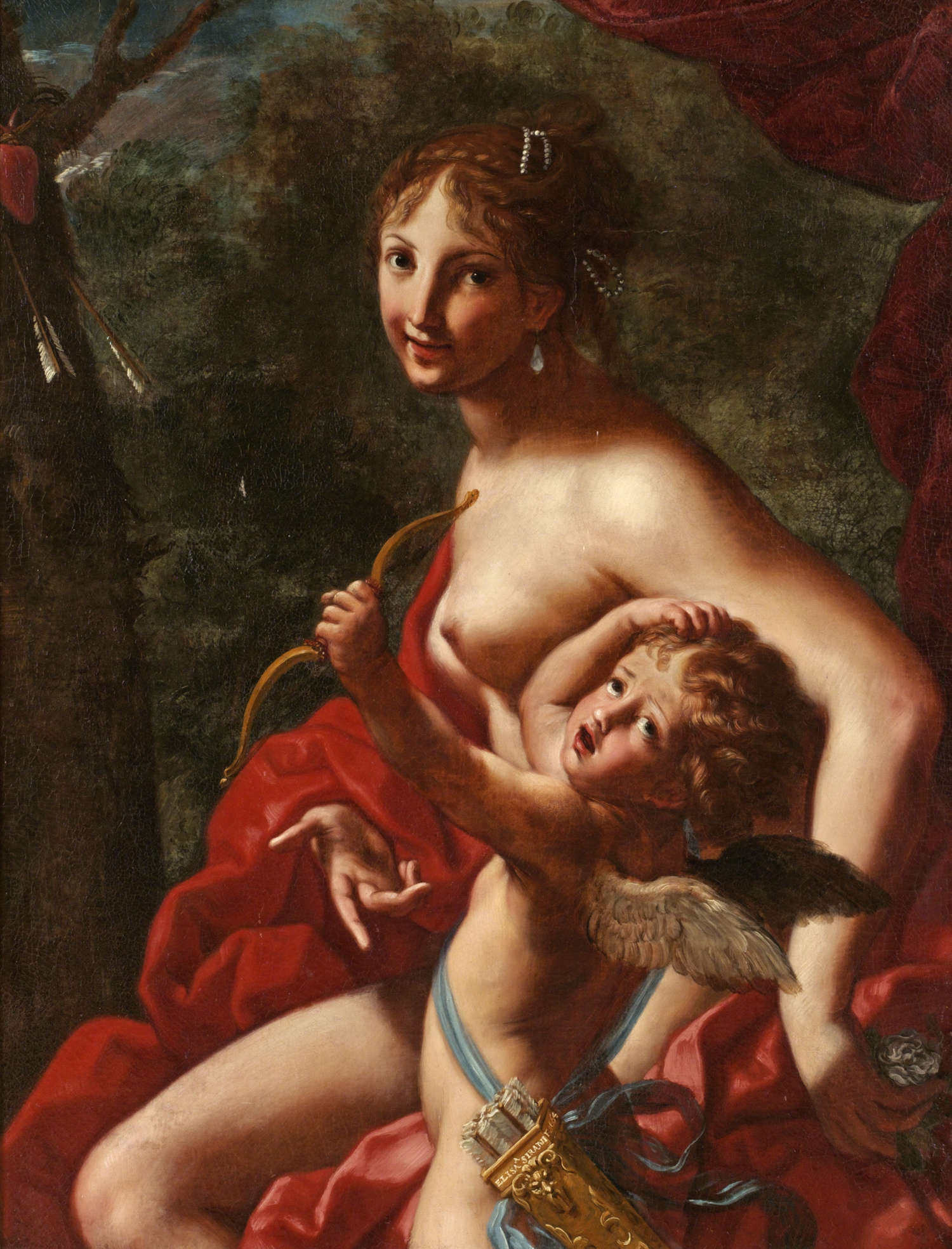
You describe Sirani as an intellectual figure.
She was believed to have studied philosophy. We know that her brother studied medicine and philosophy at the university, and that he had a tutor who was a child prodigy who was lecturing at the university when he was twelve. And I would imagine that Elisabetta would also have been given some instruction as well. Her patrons talk about her knowing philosophy, “il pensiero”, so called her una saggia donzella, a wise girl. So yes, she’s got the contents of her father’s library at her fingertips. She probably went to catechism school, the Christian Doctrine school, and was taught to read and write. We know she knew Latin because of the many Latin inscriptions on her works. She is associated with the reputation of Bologna as a paradiso delle donne, a term that comes from a seventeenth-eighteenth century source, a chronicle of Bologna written by one of Bologna’s counts who noted the women being exceptionally learned in writing and painting.
Why did a cultural paradise of women develop in Bologna?
That was the question that I started off wanting to answer. Why Bologna?
That’s what inspired you to research the women painters of Bologna?
My PhD was going to be the women artists of Bologna, looking at Lavinia Fontana, Properzia de Rossi, Sirani and perhaps some others in the later seventeenth century. There is Angela Teresa Muratori for example, who works a bit later. I wanted to know why Bologna was this particular context – a rich, fertile environment for women. I was teaching in a faculty of art and design, with students studying fine art, painting and so on. I was teaching art history. When I had studied years back, we looked at Mary Cassat and all the moderns. We may have looked at Artemisia, but none other of the historical women. I’d never heard of Elisabetta Sirani. Later as a professor I felt I had to introduce women artists into the curriculum because the majority of my students were women. It followed that for my own PhD I came to focus on women artists. And I thought that if you’re going to look at historical women artists, Bologna is where you go. Among those four women we have the first woman sculptor Properzia de Rossi, and Lavinia Fontana, the first professional woman artist who made a living from her painting, so the first commercial artist. And that was the question, why Bologna? Why did they have this?
In addition to Santa Caterina, Caterina de Vigri. Bologna has a canonized woman artist.
You have an artist who’s also a spiritual writer, illuminator and abbess of a convent. She wrote spiritual works, the best known is “Le Sette Armi Spirituali.”
So she was a Renaissance man.
A Renaissance man but a woman. That’s not unusual for nuns to be illuminators and artists, essentially. Because the convent was a space that they could learn, they could study, they could read books. It was not always the limiting constraint that feminist historians described. But getting back to the question of Bologna, the city had the university. So therefore you have an academic and intellectual culture very early, from 1088.
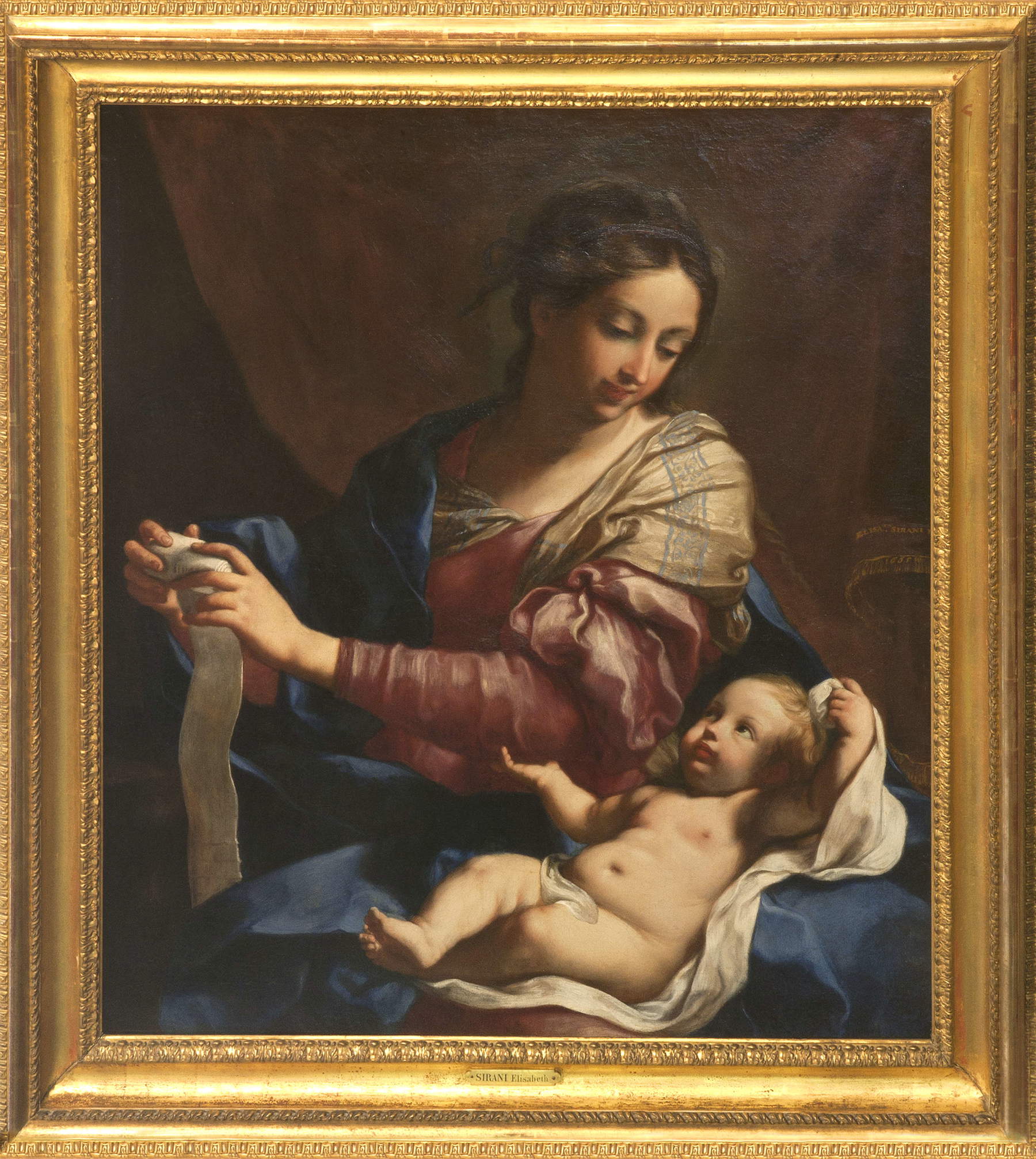
Why do you have a university with women teaching so very early?
Well, they didn’t, the point is that this is not documented. There was an oral tradition, a popular narrative that women studied and taught at the university, but if we consult the actual university records it shows that no women up until the eighteenth century were known to have studied at the university. Lavinia Fontana is said to have got a doctorate. But that was it. She didn’t. There are two sources that an English scholar who wrote on Lavinia Fontana confused. We have two lists related to learned women published in Antonio Masini’s Bologna Perlustrata (1666). It’s a religious calendar and art magazine combined. He also lists all the women artists of Bologna in a compendium that he later wrote in the 1690s. There is an addendum to the catalogue of painters and sculptors where he lists donne bolognese adottrinate who were graduates. This is the treasure. It’s all oral tradition, right? So we know about these women, but we don’t know that they actually did teach. But we know that they were learned. But there’s also another list. He lists here women who are proficient in letters. And Lavinia Fontana is listed here in 1580. Now, the person who published on Lavinia Fontana took these as one list and said that she graduated from the university.
So there is a slippage.
Yes, a slip that is perpetuated, even in a recent exhibition in Rome. This is the oral tradition that is also translated into a written tradition through the Chronicles from about the fifteenth century. They talk about these women, one writes it once and it is repeated again and again. But that’s not to deny that these women existed. They existed and some published as well. You had this focus on women and the intellectual world, that they were not incompatible, as the classical philosophers had believed. For Aristotle, woman is the imperfect male. In Bologna you also had Cardinal Gabrielle Paleotti, who was an important figure of the Council of Trent whose pastoral reforms promoted women as Christian educators, just as you have Francis de Sales in France. Paleotti’s own mother was a learned poet. He does not see any inconsistency with women and learning. And he employs women in his ministry as teachers of Christian doctrine and introduces schools of Christian doctrine for both girls and for boys. Previously boys could go to school, while girls couldn’t. But when he introduces the Christian doctrine schools the girls could also attend.
This was really the beginning of women being educated in reading and writing.
It’s the catechism, but still they’ve learned, they’re reading. That’s the text. They’re inculcating Christian virtues where certainly the feminine models of piety and chastity remain. He also employs Lavinia Fontana. Paleotti advocates the artist to be a Christian “artifice”, a Christian artist, who retells the Bible stories to the uneducated, to the general public. So the artists have to learn the scriptures and be able to narrate them in their work. They have to be clear precise messages, without the artifice that you had in the Mannerist period. Paleotti employs Lavinia Fontana to produce the altarpiece for his own family chapel. So women are seen to be an important part of Counter Reformation doctrinal teaching. He reintroduces the figure of the mother as the primary-care teacher in the family home. Apart from the upper-class families of the Renaissance who would have a male tutor (like Poliziano who tutored the Medici children), women take on a greater role within the family. So you’ve got this environment with money coming from Rome for the rebuilding of churches and the establishments of convents and the decoration of the churches. Artists have a lot of work. It’s heavily regulated by the guild and foreign artists find it very hard to work in Bologna. Vasari, for example, hardly writes about Bolognese art, because he couldn’t get work in Bologna. He went there, but they sent him away.
As such it would appear as though he cancels them.
Yes, absolutely cancel culture, cancelling the memory of these artists. But he writes a life of Properzia de Rossi, who is a woman sculptor and probably one of the first in European history that we know of, although I’m sure there are others. It’s just that we haven’t discovered them yet, the documentation isn’t there. So there’s a cultural milieu that’s really very supportive of women. Caterina de Vigri becomes the patron of artists, the patron saint of painters in Bologna. She’s really seen as a crucial figure. And from there she is adopted as the patron saint of the Accademia delle Arti of Bologna (Accademia Clementina) when it’s established in the early 1700s. She becomes the cultural custodian of Bologna.
So these women, already educated, gained greater access. They’re in a position to take full advantage of the influence of the Council of Trent, would you say?
Absolutely. Sirani, for example, has a good manager in her father Giovanni Andrea Sirani. Lavinia Fontana has her father at first, before she marries a minor painter, a nobleman from Imola. He moves to Bologna to stay with her family, in the Fontana home - which is unusual. Or rather it’s unusual for women of a certain class, but for the artisan class it wasn’t uncommon. If you belong to a workshop and you are a woman, if you marry, your husband would become part of the family business. Sandra Cavallo, who has written on artisan households, found that the women didn’t leave their family homes. Consider Lavinia Fontana’s famous self-portrait at the clavichord, with an easel in the background. The painting was a marriage portrait sent to her future father-in-law. While she didn’t have a dowry payment, her dowry would be her future earnings.
And her culture…ù
Her culture, her beauty, and the fact that she could make a living from her painting. And that was what she was contributing to the marriage. And Prospero, her father, has it in the contract that her future husband would move to the family home. Fontana can’t leave the family home and business until her father dies. And that’s when she goes to Rome. She’s been asked to Rome, called to Rome a number of times, but she doesn’t leave until her father dies, to honour the contract that she had made with him.
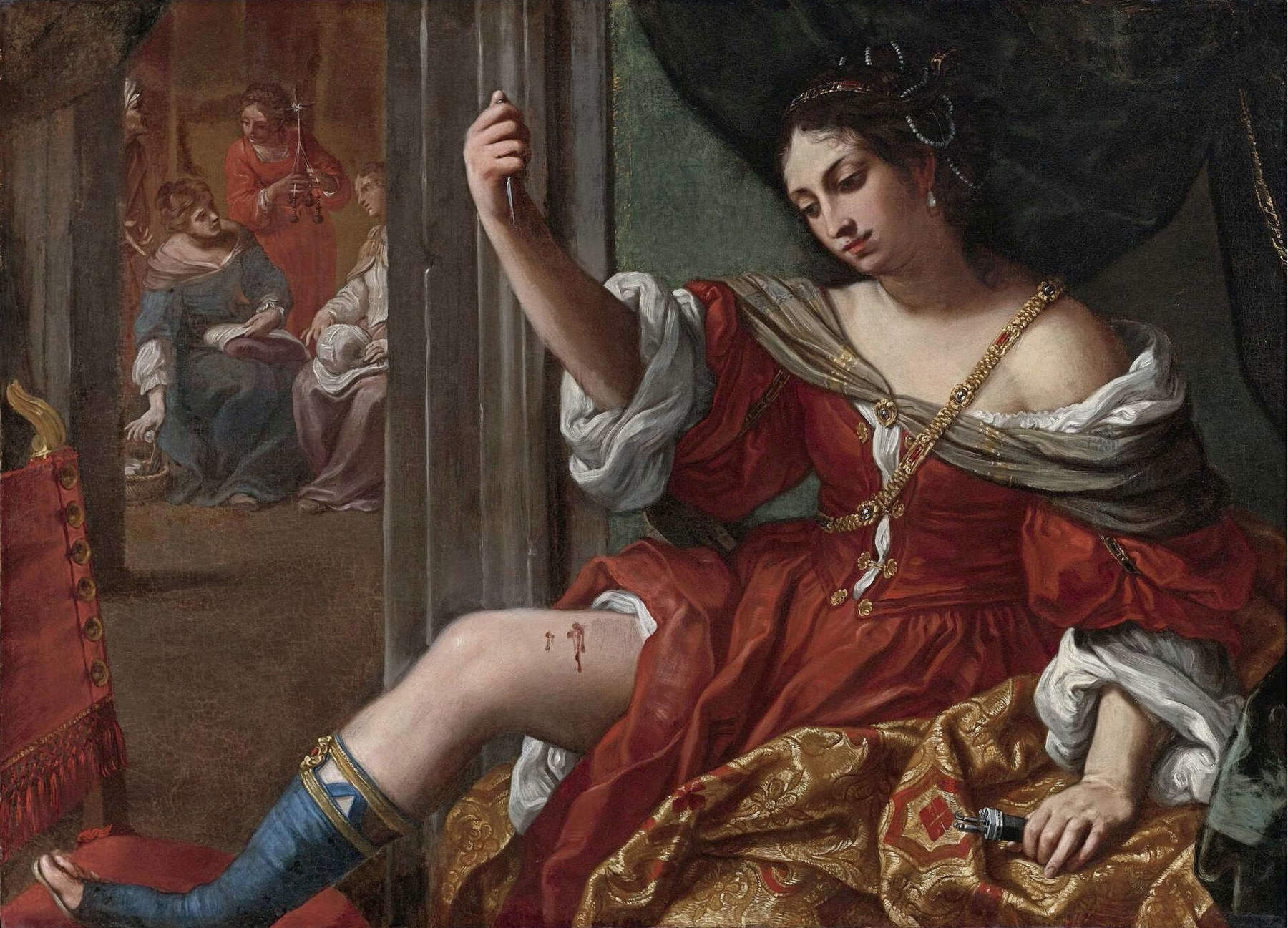
Is one’s family business the only avenue through which a woman could access training as an artist or artisan, that is, before women are permitted entry to the art academy?
No, the majority of women were figlie d’arte; they came from families where either a brother or a father painted. And they learned obviously in the family workshop. However, in Bologna and I’m sure elsewhere, we find women like for example Sofonisba Anguissola, who was a noblewoman from Cremona without a painter father. Her father was however very enlightened and believed in educating his six daughters. Sofonisba was taught to paint by Bernardino Campi, one of the most famous Cremonese painters of the period of the sixteenth century. She may have visited his studio or, more likely, he came to the home. So a male tutor teaches her and one of her sisters to paint, and then Sofonisba teaches the others. Also in Bologna, you find women attending male studios, Antonia Pinelli for example, before Sirani. She learnt how to paint from Ludovico Carracci and then married a painter.
But she wasn’t of the Carracci family.
No, she wasn’t. And then later after Sirani dies, the women start to infiltrate the male studios to learn to paint. You find them also being able to access important sites. Sirani didn’t have access to artistic sites such as the monastery of San Michele in Bosco in Bologna while the male apprentices in her father’s studio could go and do drawings from the Carracci frescos. Following Sirani, women are starting to go to these sites and to other private and public collections where they began to draw from works that they had formerly been unable to access.
So we see broad shifts in the professional opportunities afforded women artists following the Council of Trent in Bologna as they became increasingly recognised and legitimated professionally.
You are also proposing that the Council of Trent in the context of Bologna was important for the education of women and the social empowerment of motherhood. Marina Warner in her study of the cult of the Virgin, Alone of all her sex, is in two minds about the Council of Trent…
Yes, I think the Council of Trent was given a bit of bad press.
Warner argues that the Council of Trent, by making marriage a Christian sacrament, effectively diminishes the symbolism of the Virgin from her more metaphysical and allegorical configurations in a humanized and domesticated role.
You have the two: the cult of the Virgin and the Immaculate Conception, all of that was very pronounced in the seventeenth century. You have her image as the Queen of Heaven, and also you have the Mater Amabilis, the lactating Madonna and her earthly image. So it does humanise her. I don’t see this as necessarily negative. It’s more an empowering of women in one sense, giving them an identity that they could relate to in an important context.
Can it be that the institutionalisation of marriage within the scope of Christianity as decreed by the Council of Trent, gave a status, a social status to women, that they didn’t have earlier?
It does give a status to women. Furthermore, as marriage was institutionalised, the Council of Trent reintroduced consensual marriage. Before the Council a woman’s father chose the husband to whom she was compelled to marry, without an element of choice. Whereas the Council of Trent decreed that women have to be able to choose and that they have to consent to the marriage. If a woman didn’t want to marry, she didn’t have to. Traces of the Eve being subjected to the dominance of Adam for patriarchy are still there. It’s still a patriarchal society. Women could divorce or separate legally in the Catholic ecclesiastical courts, while they couldn’t in the civil courts. So if you wanted to divorce, if you had a particularly abusive husband, you could take the matter to the ecclesiastical court and your marriage could be annulled. So the Council of Trent didn’t just enclose women as is said. Yes, they did reintroduce the cloister, and clausura, the closed convents. But they also did have avenues for women to take recourse if they needed to. More and more women did choose to divorce in the seventeenth century -- and then you get the backlash, you get priests and sermons that advocated against the education of women and their newly-gained freedoms. As women became more free, it was argued, they leave the sanctity of the marriage, becoming prone to all kinds of temptations - which was again a patriarchal discourse, that is, the idea that women are more tied to their bodily senses and desires, so therefore have to be held in check.
With your work on the history of women artists, you are leading art history in the recognition of the lives and achievements of our most important women artists. How do you see our contemporary context, where the idea of the “great” woman artist is now openly accepted and even popularised, whereas for feminists in the avantgarde of women’s history writing, just twenty years ago, the discussion seemed very thorny. What is left to do?
The idea of genius and the great woman artist… We got to a stage where we needed to have the feminist readings to reintroduce action into the historical record of these women. We had to reintroduce these women artists into history. But I think we’ve got to a point now that we could start talking about artists rather than speaking of women artists and male artists. We can start, the groundwork has been done. Art history may not need to introduce a new canon, but develop one that incorporates women without taking them out of context, as an aberration. Sirani is quite clear. And also with Gentileschi, it is clear that she’s part of this system, this art system and the art market that is very strong. Sirani is the most collected woman artist that we know of over the eighteenth century. She’s certainly collected for her paintings, but also for her drawings as well as her graphic work.
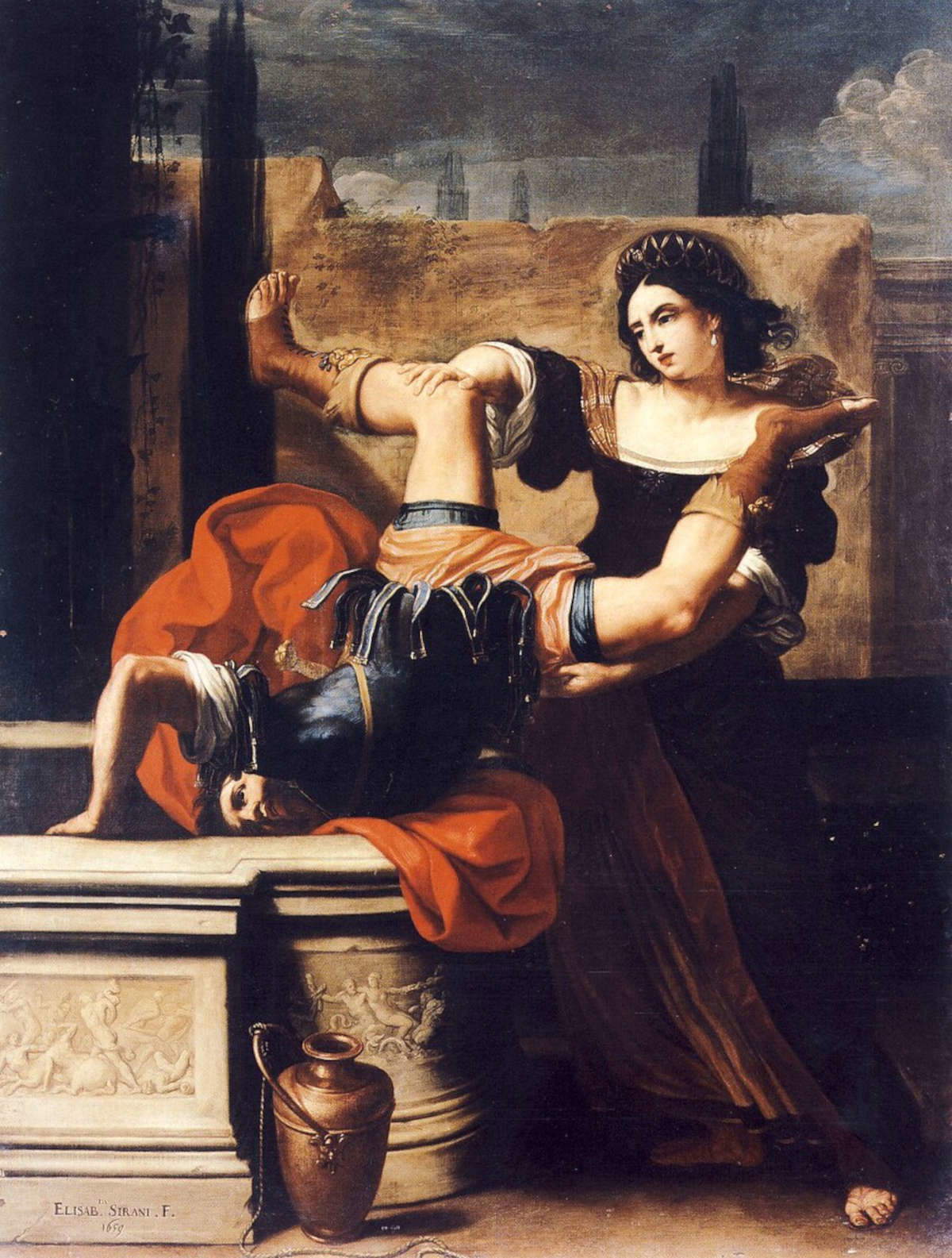
In 2014 you published the first complete catalogue of Sirani’s works. How is it that no such catalogue was published before?
It’s strange that there hasn’t been one, a catalogue raisonné of Sirani’s works, surprising perhaps given that, as you said, there is a first, very early, biography of Sirani, which is also the longest biography of a woman artist of the period.
The biography of Carlo Cesare Malvasia.
We have her notebook. He published her notebook, with 105 entries documenting 203 works.
She signed all her work, she documented everything. You’ve got a reference in the volume of Masini.
You’ve got Malvasia and you’ve got Giovanni Luigi Piccinardi’s Funeral Oration, where he talks about her works and her patrons. It hadn’t been done except for Fiorella Frisoni in La Scuola di Guido Reni (1992), with her chapter on Elisabetta Sirani, where they tried to list and document as many paintings as they could, but it’s not a catalogue raisonné. And yes, Elisabetta’s notebook, a fantastic research tool, where she describes the paintings in detail, the composition, the iconography, and for whom the paintings were intended. I’m currently preparing a paper on that very notebook as a research tool.
Why did it not happen, what is your understanding?
There were exhibitions and catalogue entries, but no one was really working on her. When I went to Bologna to look at the women artists of Bologna, Caroline Murphy was there doing her research on Lavinia Fontana, her PhD, that ended up being the book. Lavinia Fontana already had a catalogue raisonné. Vera Fortunati was preparing the exhibition of Lavinia Fontana that was held in Bologna, and then a few years later in Washington. They included some works by Elisabetta Sirani as well, but no one apart from Fiorella Frisoni had done anything on Sirani. So that’s why I focused on her. And the first documents that I came across were of Sirani’s library, the professional library of the father.
It was wide open.
I said, well, I’ll do Sirani. And I did get a bit of resistance at first from the Bolognese establishment, the art historical establishment. But ten years later I was contacted by Vera Fortunati who says that she’s curating a series on women artists for a Bolognese publishing house. And she wants Elisabetta Sirani to be the first. She knows I’d almost finished the manuscript and wanted to publish it. And so we did that one in Italian. That’s the first of the series. And then there’s a second on Ginevra Cantofoli, then Properzia de Rossi. There were only three unfortunately.
You mention your new paper on Sirani’s notebook. While you have important publications on Elisabetta Sirani, it seems that you’re not finished with the artist and her art. Is there more to unfold about Sirani and the women artists of Bologna more broadly? With your long involvement with the city and its artists, where are you now directed with your research?
I was invited to present the paper on Sirani’s notebook and was pleasantly surprised that there was more one could mine from the artist’s descriptions of her works. My discussion focused on the notebook as an ego document, and a means by which Sirani was consciously writing herself and her art into the historical record, giving women a public voice. There are always new finds to be made in the archives especially in relation to individual paintings and patrons, so I look forward to these discoveries. I would love to find a letter Sirani wrote, but so far, no correspondence has come to light. My research has moved onto women’s patronage, especially exploring the nexus between women artists and their female patrons, something I began looking at with Sirani and the noblewomen and merchant wives she worked for. I recently published a monograph on one of her royal patrons, the Grand Duchess of Tuscany Vittoria della Rovere (1622-1694) which looked at the sovereign’s female networks including ladies-in-waiting and the artists and musicians she supported at her gynocentric court. I am presently continuing my research on women patrons in Bologna in the Early Modern period.
Modesti, A. (2023). Elisabetta Sirani (Illuminating Women Artists series). London, England: Lund Humphries Publishers Ltd; Los Angeles, CA: Getty Publications
See also
Modesti, A. (2004). Elisabetta Sirani: Una virtuosa del Seicento bolognese. Bologna: Editrice Compositori.
Modesti, A. (2014). Elisabetta Sirani “Virtuosa”: Women’s cultural production in early modern Bologna (Late Medieval and Early Modern Studies, Vol. 22). Turnhout, Belgium: Brepols Publishers.
Works Cited
Arcangeli, F., et al. (1959). Maestri della pittura del Seicento emiliano, 26 aprile–5 luglio 1959, Bologna, Palazzo dell’Archiginnasio: Catalogo. Bologna: Alfa.
Frisoni, F. (1978). “La vera Sirani”. Paragone, 335, 3–18.
Negro, E., & Pirondini, M. (Eds.). (1992). La scuola di Guido Reni. Modena, Italy: Panini.
Garrard, M. D. (1989). Artemisia Gentileschi: The image of the female hero in Italian Baroque art. Princeton: Princeton University Press.
Greer, G. (1979). The obstacle race: The fortunes of women painters and their work. New York: Farrar, Straus and Giroux.
Harris, A. S., & Nochlin, L. (1976). Women artists: 1550–1950. Los Angeles County Museum of Art.
Malvasia, C. C. (1678). Felsina pittrice: Vite de’ pittori bolognesi. Bologna: Erede di Domenico Barbieri.
Masini, A. di P. (1666). Bologna perlustrata: Parte terza, terza impressione notabilmente accresciuta, in cui si fa mentione ogni giorno … Bologna: Per l’erede di Vittorio Benacci.
Masini, A. di P. (1690). Aggiunta alla Bologna perlustrata con i successi più memorabili d’oppo l’ultima stampa dall’anno 1666. Bologna: Erede di Vittorio Benacci.
Piccinardi, G. L. (1665). Il pennello lagrimato: Orazione funebre del signor Gio. Luigi Picinardi, dignissimo priore de’ Signori leggisti nello studio di Bologna, con varie poesie in morte della signora Elisabetta Sirani pittrice famosissima. Bologna, Italy: Giacomo Monti.
Ragg, L. M. (1907). The women artists of Bologna. London: Methuen & Co.
Sparrow, W.S. (1905) Women painters of the world, from the time of Caterina Vigri, 1413–1463, to Rosa Bonheur and the present day. London: Hodder & Stoughton.
Warner, M. (1976). Alone of all her sex: The myth and the cult of the Virgin Mary. New York, NY: Alfred A. Knopf.
Warning: the translation into English of the original Italian article was created using automatic tools. We undertake to review all articles, but we do not guarantee the total absence of inaccuracies in the translation due to the program. You can find the original by clicking on the ITA button. If you find any mistake,please contact us.